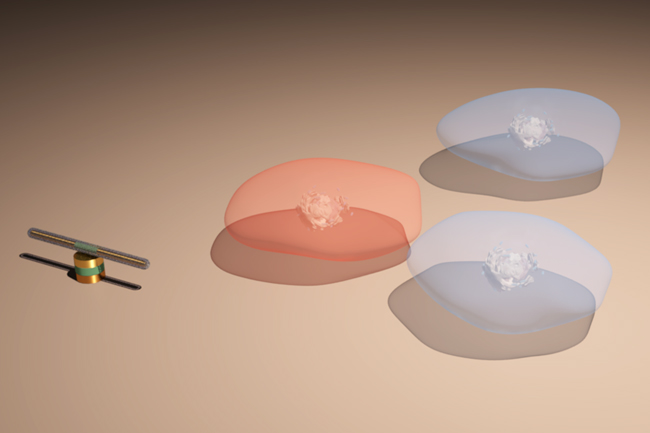UT researchers have built the world’s tiniest, speediest and longest-running artificial nanomotor — a motor as fast as a jet engine but 500 times smaller than a grain of salt.
Donglei Fan, mechanical engineering assistant professor, led the team of researchers in creating, constructing and testing the nanomotor. Fan said these nanomotors have led to advancements in nanorobotic technology, which could revolutionize medicinal practices. Acting as a replacement for shots or pills, a minuscule robot would be implanted into your blood stream to dispense medication to the targeted issue, according to Fan. The development of these tiny mechanisms could help diabetics take insulin or could even be used to treat cancer patients, Fan said.
Fan said that through their experimentation the researchers are one step closer to the application of nanomotor technology. Graduate research assistant Jianhe Guo said the importance of the nanomotor’s microscopic size, which is less than one micrometer, is that it enables biologists to study the structure of cells.
“The reason we want such a small nanomotor is so maybe we can put this motor inside of a [living] cell,” Guo said.
According to Fan, the nanomotors are able to travel through liquids, while mixing and pumping biochemicals at a rapid pace. Moving at a speed of 18,000 RPMs, the nanomotor is able to rotate incessantly for a total of 15 hours. Researcher and graduate student Xiaobin Xu said it is important to simulate the real environment in the biochemical release process, so changes can be monitored.
“We found that we can use the rotation speed to control the release rate,” Xu said.
Operating using the technique Fan invented, the team constructed the nanomotor’s parts individually employing AC and DC electrical fields. Graduate research assistant Kwanoh Kim said initially there were problems with the performance and size of the motors, but the assembly process was ultimately improved for maximum durability.
The team has future plans to test the motors with a living cell. According to Fan, acting in a controlled environment allows for the team to monitor how nanomotors transfer molecules. Fan said she hopes to better understand how cells communicate so that they can fine-tune the release of the biochemicals.
“This work will inspire people in the biological field, because we plan to use such a device for the stimulation of biological cells to do a more fundamental study about things like cell-to-cell communication,” Fan said.




















